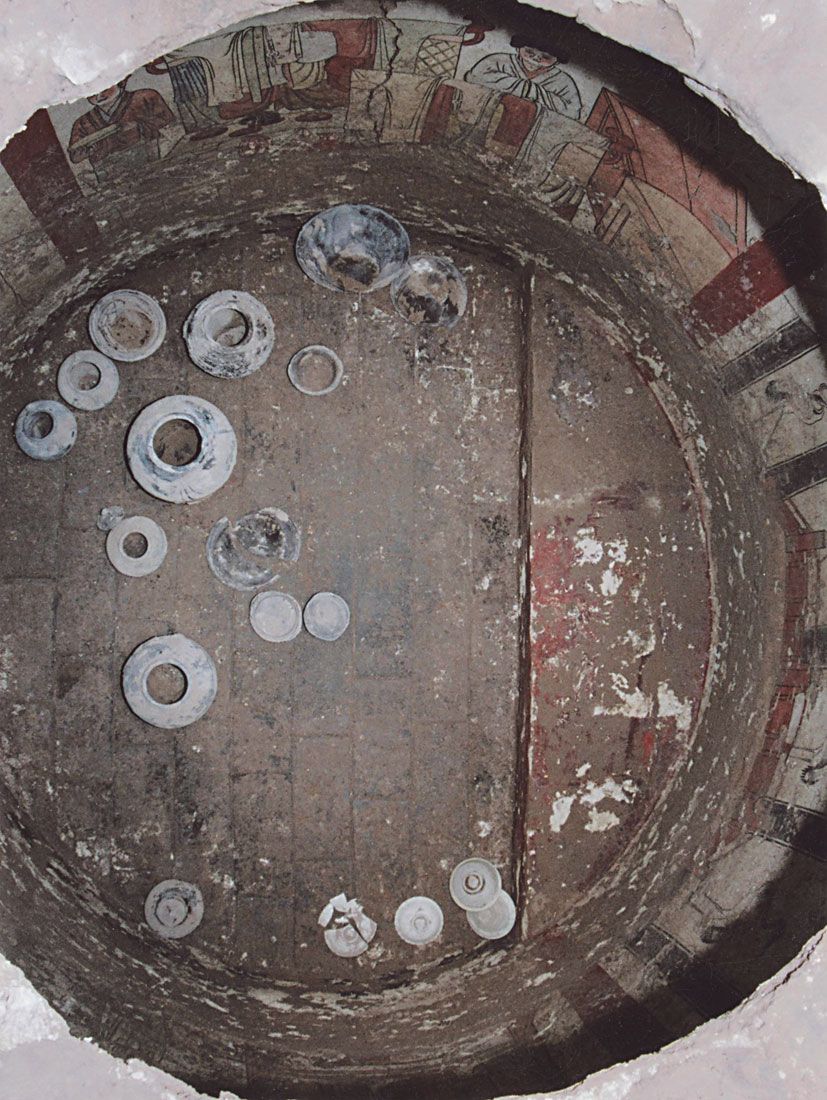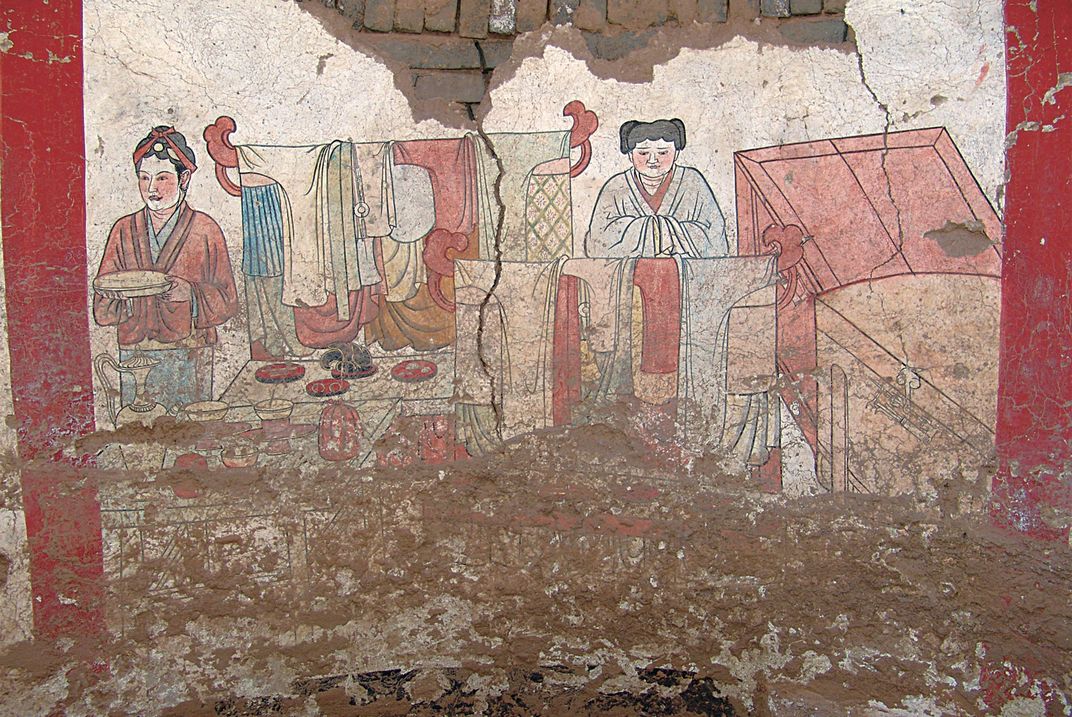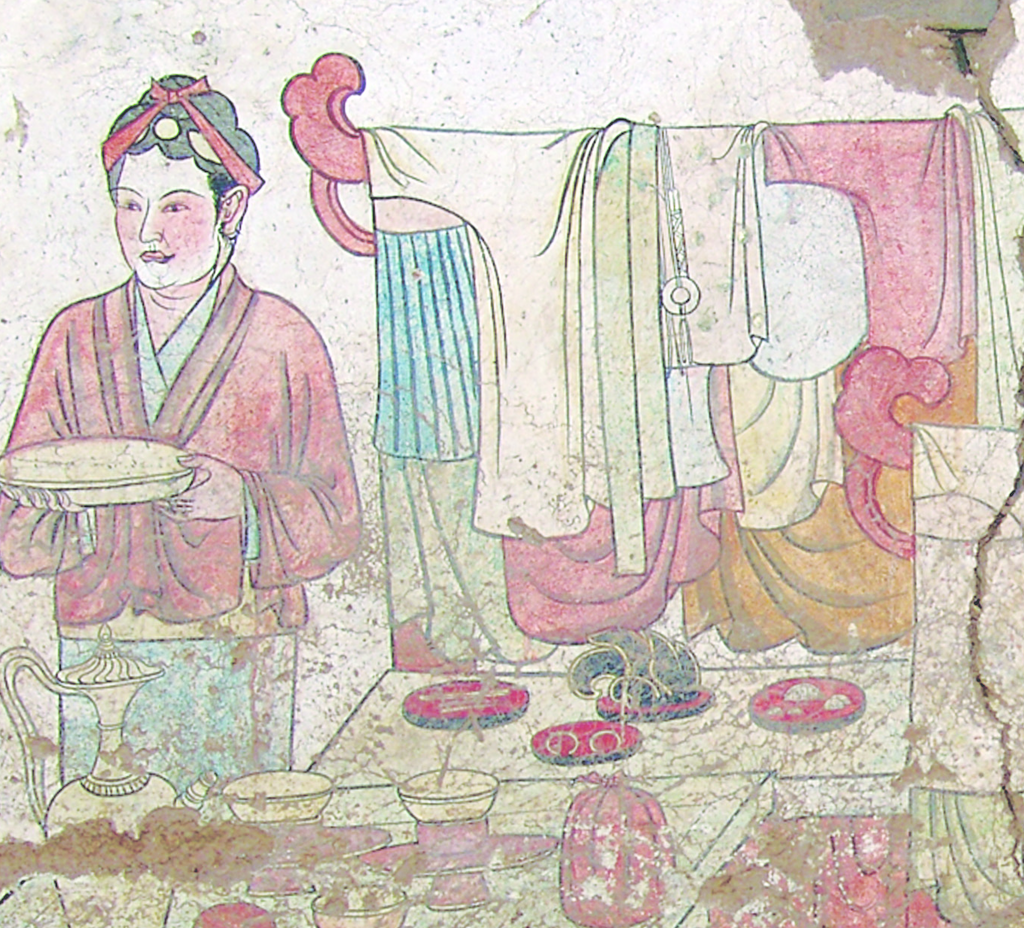Chinese Tomb Murals Paint Colorful Picture of 1000-Year-Old Fashions
Racks of vibrant clothing and tables laden with fineries are depicted on the walls of the Liao Dynasty tomb
In 2007, archaeologists working in Datong City, China, began excavating a 1,000-year-old, circular tomb. The entrance to the burial place was sealed, so the team slipped into the tomb through a hole in the roof. Inside, they made a delightful discovery: a series of vibrant, intricate murals depicting an opulent collection of clothing, jewelry and other fineries.
The murals were uncovered by experts at the Datong Municipal Institute of Archaeology, as Owen Jarus reports for Live Science. The team chronicled their findings in a 2015 report, written in Chinese, for the journal Wenwu. An English version of the paper appeared this year in Chinese Cultural Relics.
Researchers believe that the tomb was built for a married couple who lived and died during the Liao Dynasty (907-1125 A.D.). Archaeologists found an urn containing cremated remains in the center of the tomb, but according to Claire Voon of Hyperallergic, the couple is not represented in the murals that adorn the walls of the burial chamber. Instead, the paintings offer a vivid snapshot of domestic life: male and female servants stand by racks heaped with clothing and tables laden with jewels and household wares.
The valuables depicted in these murals are rendered in exquisite detail. There is a jade ring and a string of black beads. There are little hairpins and combs. There are narrow-necked jugs and red saucers. The clothes are painted in a blues, greys, greens, pinks, and browns. One garment boasts a geometric diamond pattern, with a tiny red flower in the center of each diamond.
The artists’ concern for variation is further reflected in the portraits of servants, who wear different outfits and hairstyles. “The headdresses on the mural figures are in a theatrical style, the first time this has been seen in the Liao dynasty tombs in Datong City,” the researchers write, according to Voon.
Nestled amongst these scenes of everyday life is a wide mural of four cranes, each striking a unique pose.
The tomb paintings offer insight into domestic rituals and mortuary customs during the powerful—but relatively short-lived—rule of the Liao Dynasty. According to The Asia Society, the empire was founded by a nomadic group from Mongolia known as the Khitan, who moved into northern China after the collapse of the Tang Dynasty. Hoping to rule rather than plunder, the Khitan adopted Chinese reign titles, built a Chinese-style capital, and developed an administrative system based on a Chinese model.
Richly decorated tombs were not uncommon during this period, but they reflected a relatively recent trend. As Frederick W. Mote writes in Imperial China 900-1800, the “Liao period witnessed an extraordinary burst of elaborate underground tomb constructions for Khitans, for Chinese, and for other members of the elite strata.”
Archaeologists have indeed uncovered a number of tombs that attest to sumptuous burial practices. In 2014, for instance, the Datong Municipal Institute of Archaeology announced that it had found another Liao tomb, its ceiling painted with stars and constellations. Other murals showed servants carrying fruit and drinks, and researchers believe that the paintings also depict the deceased’s pets: a cat and a dog, each wearing a red ribbon around its neck. Like the 2007 discovery, this tomb tells the story of daily life in the elite households of a bygone empire.



